8F2 Science
Section outline
-
Kia ora 8F2! My name is Ms Brandauer ibrandauer@mhjc.school.nz and I will be your science teacher for the year. I hope you have had a great break and fun holiday and are ready to explore science!
Learning Intentions: We are learning to (WALT)...
- Work as a team
- Get to know each other
Activities:
- Getting to know Ms Brandauer
- Icebreaker games
- Label your books and personalise it
Homework: Personalise front and back cover of your book for next week.
All class work NOT completed will be completed for Homework !!
-

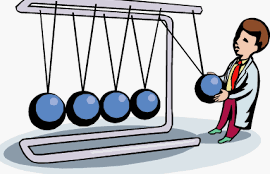
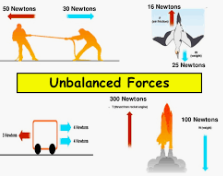
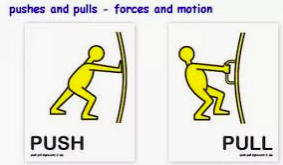
Kia ora 8F1 students. Below you will find this terms Achievement Objectives and the Learning Intention for the next few weeks.Big Idea: “Kia Kaha - Stand Strong” Flash Mob
Achievement Objectives
Nature of science
Investigating in science
-
Build on prior experiences, working together to share and examine their own and others’ knowledge.
-
Ask questions, find evidence, explore simple models, and carry out appropriate investigations to develop simple explanations.
Physical world
Explore, describe, and represent patterns and trends for everyday examples of physical phenomena, such as movement, forces, electricity and magnetism, light, sound, waves, and heat. For example, identify and describe the effect of forces (contact and non-contact) on the motion of objects; identify and describe everyday examples of sources of energy, forms of energy, and energy transformations.
Learning Intentions: We are learning to (WALT)...
- exploring the concepts of force and motion
- Investigating balanced and unbalanced forces
- Understanding the Laws of motion
Success Criteria: I can/have..
- define or explain the following terms - Force, contact vs non contact forces, Newton's laws of motion, gravity, mass, weight, friction, buoyancy, thrust, air/water resistance
- Explain forces acting on a object, balanced and unbalanced forces, using diagrams
- Calculate distance, speed, force
Activities:
- Teacher-led activities and discussion to understand forces
- Read the pdf file on forces and answer the questions from the activity section.
- Use the interactive website to develop your understanding of forces and motion.
- Write out Newton's Laws of Motion giving your own example to explain this idea.
Vocab:
- Force
- Squeezing
- Contact force
- Non-contact force
- Motion
- Inertia
- Stationary
- Motion
- Thrust
- Exerted
Homework: Education Perfect
All Class work NOT completed will be completed for Homework !! -
-




Kia ora 8F1 students. Below you will find this terms Achievement Objectives and the Learning Intention for the next few weeks.Big Idea: “Kia Kaha - Stand Strong” Flash Mob.
Achievement Objectives
Nature of science
Investigating in science
-
Build on prior experiences, working together to share and examine their own and others’ knowledge.
-
Ask questions, find evidence, explore simple models, and carry out appropriate investigations to develop simple explanations.
Physical world
Explore, describe, and represent patterns and trends for everyday examples of physical phenomena, such as movement, forces, electricity and magnetism, light, sound, waves, and heat. For example, identify and describe the effect of forces (contact and non-contact) on the motion of objects; identify and describe everyday examples of sources of energy, forms of energy, and energy transformations.
Learning Intentions: We are learning to (WALT)...
- exploring the concepts of force and motion
- Investigating balanced and unbalanced forces
- Understanding the Laws of motion
Success Criteria: I can/have..
- define or explain the following terms - Force, contact vs non contact forces, Newton's laws of motion, gravity, mass, weight, friction, buoyancy, thrust, air/water resistance
- Explain forces acting on a object, balanced and unbalanced forces, using diagrams
- Calculate distance, speed, force
Activities:
- Teacher-led activities and discussion to understand forces
- Read the pdf file on forces and answer the questions from the activity section.
- Use the interactive website to develop your understanding of forces and motion.
- Write out Newton's Laws of Motion giving your own example to explain this idea.
Vocab:
- Force
- Squeezing
- Contact force
- Non-contact force
- Motion
- Inertia
- Stationary
- Motion
- Thrust
- Exerted
Homework: Education Perfect
All Class work NOT completed will be completed for Homework !!
-
-
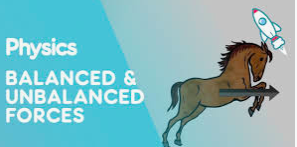



Kia ora 8F2 students. Below you will find this terms Achievement Objectives and the Learning Intention for the next few weeks.Big Idea: “Kia Kaha - Stand Strong” Flash Mob.
Achievement Objectives
Nature of science
Investigating in science
-
Build on prior experiences, working together to share and examine their own and others’ knowledge.
-
Ask questions, find evidence, explore simple models, and carry out appropriate investigations to develop simple explanations.
Physical world
Explore, describe, and represent patterns and trends for everyday examples of physical phenomena, such as movement, forces, electricity and magnetism, light, sound, waves, and heat. For example, identify and describe the effect of forces (contact and non-contact) on the motion of objects; identify and describe everyday examples of sources of energy, forms of energy, and energy transformations.
Learning Intentions: We are learning to (WALT)...
- explore Newton's laws.
- Investigating the effects of gravity, friction and air resistance
Success Criteria: I can/have..
- describe Newton's first law.
- use a force meter.
- describe gravity, friction and air resistance.
Activities:
- Video on forces and inertia
- Measuring forces with a force meter
- Google Classroom activities
Vocab:
- Force
- Squeezing
- Contact force
- Non-contact force
- Motion
- Inertia
- Stationary
- Motion
- Thrust
- Exerted
Homework: Education Perfect
All Class work NOT completed will be completed for Homework !!
-
-




Kia ora 8F2 students. Below you will find this terms Achievement Objectives and the Learning Intention for the next few weeks.Big Idea: “Kia Kaha - Stand Strong” Flash Mob.
Achievement Objectives
Nature of science
Investigating in science
-
Build on prior experiences, working together to share and examine their own and others’ knowledge.
-
Ask questions, find evidence, explore simple models, and carry out appropriate investigations to develop simple explanations.
Physical world
Explore, describe, and represent patterns and trends for everyday examples of physical phenomena, such as movement, forces, electricity and magnetism, light, sound, waves, and heat. For example, identify and describe the effect of forces (contact and non-contact) on the motion of objects; identify and describe everyday examples of sources of energy, forms of energy, and energy transformations.
EXPLORE / TŪHURA learning intentions:
- We are EXPLORING the forces of gravity and friction.
- We are EXPLORING how air resistance affects objects.
Vocab:
- Force
- Squeezing
- Contact force
- Non-contact force
- Motion
- Inertia
- Stationary
- Motion
- Thrust
- Exerted
Homework: Education Perfect
All Class work NOT completed will be completed for Homework !! -
-




Kia ora 8F2 students. Below you will find this terms Achievement Objectives and the Learning Intention for the next few weeks.Big Idea: “Kia Kaha - Stand Strong” Flash Mob.
Achievement Objectives
Nature of science
Investigating in science
-
Build on prior experiences, working together to share and examine their own and others’ knowledge.
-
Ask questions, find evidence, explore simple models, and carry out appropriate investigations to develop simple explanations.
Physical world
Explore, describe, and represent patterns and trends for everyday examples of physical phenomena, such as movement, forces, electricity and magnetism, light, sound, waves, and heat. For example, identify and describe the effect of forces (contact and non-contact) on the motion of objects; identify and describe everyday examples of sources of energy, forms of energy, and energy transformations.
FOCUS / ARONGA learning intentions:
- We are FOCUSING on the concept of friction.
- We are FOCUSING on explaining the difference between wanted and unwanted friction
- We are FOCUSING on developing an understanding of how to reduce friction
Success Criteria: I can/have...
- explain what friction is.
- describe in what situations we need friction and when we do not want friction in daily life.
- describe how we can reduce friction in daily life.
Activities:
- Google Classroom
- Powerpoint slides and activities
- Carry out an experiment
Vocab:
- Force
- Squeezing
- Contact force
- Non-contact force
- Motion
- Inertia
- Stationary
- Motion
- Thrust
- Exerted
- Friction
- Air-resistance
Homework: Education Perfect
All Class work NOT completed will be completed for Homework !!
-
-




Kia ora 8F2 students. Below you will find this terms Achievement Objectives and the Learning Intention for the next few weeks.Big Idea: “Kia Kaha - Stand Strong” Flash Mob.
Achievement Objectives
Nature of science
Investigating in science
-
Build on prior experiences, working together to share and examine their own and others’ knowledge.
-
Ask questions, find evidence, explore simple models, and carry out appropriate investigations to develop simple explanations.
Physical world
Explore, describe, and represent patterns and trends for everyday examples of physical phenomena, such as movement, forces, electricity and magnetism, light, sound, waves, and heat. For example, identify and describe the effect of forces (contact and non-contact) on the motion of objects; identify and describe everyday examples of sources of energy, forms of energy, and energy transformations.
FOCUS / ARONGA learning intentions:
- We are FOCUSING on the creation of sounds.
Success Criteria
- describe how sound travels through different mediums
- identify how sound is made
- explain the effects of amplitudes of sound
- explain what the frequency of a sound is
Activities
See Google Classroom
Practicals
Homework: Education Perfect
All Class work NOT completed will be completed for Homework !!
-
-
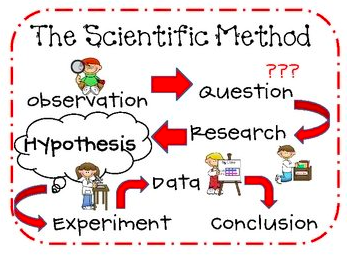
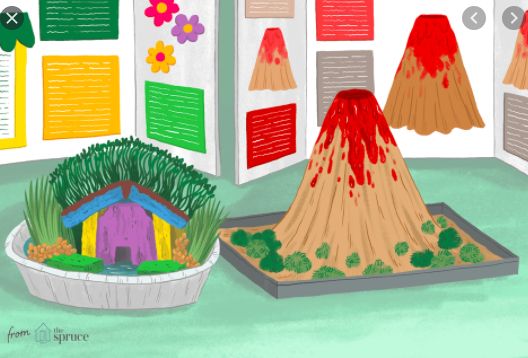
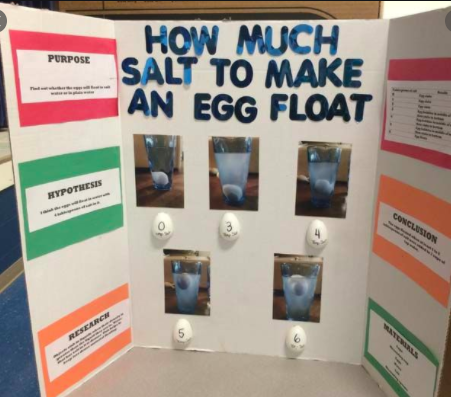
Kia ora 8F2 students.
We will be working on our Science Fair Project for the whole of Term 2. This will need to be done at home, in class we will learn about the scientific method.
This week please refer to Google Classroom "2020 Science Fair Resource Page" where all the information you need will be displayed. You need to choose a topic you are interested in and then formulate a question you would like to investigate.
-


Kia ora 8F2 students. Hope you and your family are all well and had a great holiday. This week is our first week back and we are starting our online learning.
Week 1 of Term 2 will be for you to work on your first assessment for this year. I have attached the assessment below so please go ahead and read through it. It should be straightforward but if you have any questions please contact me via email. I will be available for you in your timetabled science class. I will also post some more guidelines for your assessment and discuss the TAAB with you on Google Classroom.
Homework will be for you to work on your science fair project. By now you should have decided on your experiment. Please email me your chosen experiment and we can discuss together.
Please refer to Google Classroom as my instructions and school work to be done will be posted there.
PLAN & DO / WHAKAMAHI learning intentions:
- We are PLANNING to apply our knowledge of forces so that we can create a prezi, website, or slideshow showing the forces of physics acting on a dancer.
-
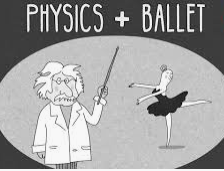

Kia ora 8F2 students.
It's now Week 2 of Term 2 and we will still be working on our assessment.
We are also working on our science fair project. By now you all should have a topic you like and have written all you have done so far into your logbook. This week we will formulate our hypothesis and do some background research on the topic you have chosen.
Homework will be for you to work on your science fair project.
PLAN & DO / WHAKAMAHI learning intentions:
- We are PLANNING on constructing the solar system so that we can develop an appreciation of the distances between the planets.
-



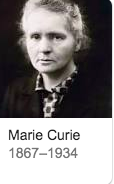

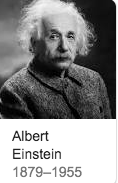
Kia ora 8F2 students. Below you will find the Achievement Objectives and the Learning Intention for this term.Achievement Objectives
Nature of science
Investigating in science
-
Build on prior experiences, working together to share and examine their own and others’ knowledge.
-
Ask questions, find evidence, explore simple models, and carry out appropriate investigations to develop simple explanations.
EXPLORE / TŪHURA learning intentions:
- We are EXPLORING to investigate the inventions of famous scientists
- We are EXPLORING to research how the time they lived in shaped their thinking
We are EXPLORING to recognize their contributions to society
- Understand how science can solve problems
- How scientific research changed over time
- Understand the nature of scientists work
- Discuss the significance of and relevance of the scientific inquiry
ACTIVITIES
See Google Classroom for all activities
Period 1
Teacher only day
Period 2
Google meets with Ms B. Introduction of famous scientists.
Worksheet
Period 3
Introduction of 'brain pop'.
"Games" and "Video"
Homework
Work on your science fair project. By now you should all have your topic and working on a hypothesis. I have posted a document on how to write a hypothesis on Google Classroom. -
-






Kia ora 8F2 students. Below you will find the Achievement Objectives and the Learning Intention for this term.Achievement Objectives
Nature of science
Investigating in science
-
Build on prior experiences, working together to share and examine their own and others’ knowledge.
-
Ask questions, find evidence, explore simple models, and carry out appropriate investigations to develop simple explanations.
EXPLORE / TŪHURA learning intentions:
- We are EXPLORING to investigate the inventions of famous scientists
- We are EXPLORING to research how the time they lived in shaped their thinking
-
We are EXPLORING to recognize their contributions to society
- Understand how science can solve problems
- How scientific research changed over time
- Understand the nature of scientists work
- Discuss the significance of and relevance of the scientific inquiry
ACTIVITIES
See Google Classroom for all activities
Period 1
Google meets with Ms B. Discussion about Alexander Fleming
Work on 'What are scientists like - newspaper article'
Period 2
Work on 'What are scientists like - newspaper article'
Period 3
Science Fair - Hypothesis and Method
Homework
Work on your science fair project.
-
-
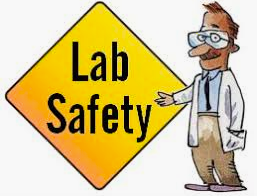
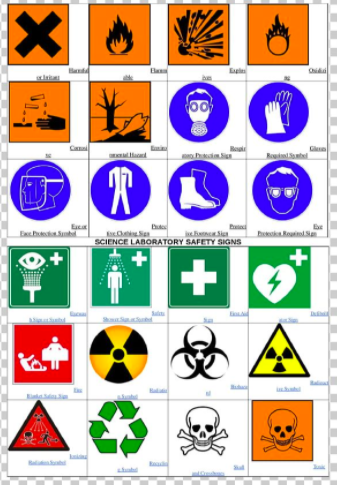
Kia ora 8F1 students. Below you will find this terms Achievement Objective and the Learning Intention.
Achievement Objectives
Nature of science
Investigating in science
-
Build on prior experiences, working together to share and examine their own and others’ knowledge.
-
Ask questions, find evidence, explore simple models, and carry out appropriate investigations to develop simple explanations.
EXPLORE / TŪHURA learning intentions:
- We are EXPLORING safety in the laboratory by recognising potential hazards in the laboratory.
- We are EXPLORING to define the scientific method.
SUCCESS CRITERIA
-
explain to safety rules in the laboratory and identify hazards.
-
recall common hazard symbols
-
describe the scientific method.
ACTIVITIES
See Google Classroom for all the activities
Period 1
Ms Brandauer explaining the scientific method on google meet
Worksheets
Watch the video from youtube
Period 2
Education Perfect task
Period 3
Laboratory safety and equipment
Homework
Science fair - Work on your science fair project
-
-





 .
. 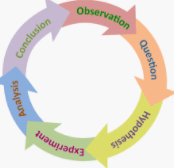

Kia ora 8F2 students. Below you will find the Achievement Objectives and the Learning Intention for this term.Big Idea: NZ Superstars
Achievement Objectives
Nature of science
Investigating in science
-
Build on prior experiences, working together to share and examine their own and others’ knowledge.
-
Ask questions, find evidence, explore simple models, and carry out appropriate investigations to develop simple explanations.
EXPLORE / TŪHURA learning intentions:
- We are EXPLORING.to recognise the different steps of the scientific method.
- We are EXPLORING to investigate how observations, evidence, and scientific hypotheses contribute to the scientific method
SUCCESS CRITERIA
• recognize the different steps of the scientific method.
• explain what makes a hypothesis testable.
• can write a hypothesis based on observations.
• can recognize invalid hypotheses
Lesson 1:
Catch up on work from distance learning.
Lesson 2:
Introducing a practical investigation: Designing an experiment. Collect data.Lesson 3:
Formulate a hypothesis. Do worksheets.
ACTIVITIES:
See Google Classroom for all activities.
Homework
Work on your science fair project.
-
-





 .
. 


Kia ora 8F2 students. Below you will find the Achievement Objectives and the Learning Intention for this term.
Big Idea: NZ Superstars
Achievement Objectives
Nature of science
Investigating in science
-
Build on prior experiences, working together to share and examine their own and others’ knowledge.
-
Ask questions, find evidence, explore simple models, and carry out appropriate investigations to develop simple explanations.
FOCUS / ARONGA learning intentions:
- We are FOCUSING on defining a plan for asking questions and testing possible answers through the scientific method.
- We are FOCUSING on developing our writing for the lab report.
- We are FOCUSING on analysing and discussing our data.
SUCCESS CRITERIA
• write an introduction for a scientific report.
• describe the difference between control, independent, and dependent variable.
• conduct a fair test.
Lesson 1
Introduction to variables
You tube clip
Power point presentation and group work.
Lesson 2
Experiment and describing the variables.
Lesson 3
Working on science fair - Finish introduction and get started on the experiment.
Record information into your science fair log book.
Homework
Work on your science fair project
-
-





 .
. 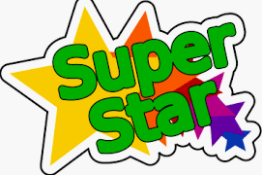


Kia ora 8F2 students. Below you will find the Achievement Objectives and the Learning Intention for this term.
Big Idea: NZ Superstars
Achievement Objectives
Nature of science
Investigating in science
-
Build on prior experiences, working together to share and examine their own and others’ knowledge.
-
Ask questions, find evidence, explore simple models, and carry out appropriate investigations to develop simple explanations.
FOCUS / ARONGA learning intentions:
- We are FOCUSING on defining a plan for asking questions and testing possible answers through the scientific method.
- We are FOCUSING on developing our writing for the lab report.
- We are FOCUSING on analysing and discussing our data.
SUCCESS CRITERIA
• To identify the most important aspects of a results table.
• To understand how to organise data in a table format.
• To analyse the data and suggest improvements.
See Google Classroom for further details
Lesson 1
Recap what independent, dependent and control variables are.
Collect data.
Lesson 2
Powerpoint presentation on how to to organise data in a table format.
Transfer data into a result table and identify the most important aspects of a results table.
Lesson 3
Analyse your results with the help of Ms Brandauer
Homework
Work on your science fair project
-
-





 .
. 


Kia ora 8F2 students. Below you will find the Achievement Objectives and the Learning Intention for this term.
Big Idea: NZ Superstars
Achievement Objectives
Nature of science
Investigating in science
-
Build on prior experiences, working together to share and examine their own and others’ knowledge.
-
Ask questions, find evidence, explore simple models, and carry out appropriate investigations to develop simple explanations.
FOCUS / ARONGA learning intentions:
- We are FOCUSING on defining a plan for asking questions and testing possible answers through the scientific method.
- We are FOCUSING on developing our writing for the lab report.
- We are FOCUSING on analysing and discussing our data.
SUCCESS CRITERIA
• To identify the most important aspects of a results table.
• To understand how to organise data in a table format.
• To analyse the data and suggest improvements.
See Google Classroom for further details
If you have not started your science fair experiment, you need to start this week.
Lesson 1
Finish data collection and transfer the data into a spreadsheet.
Graph your data.
Lesson 2
Looking at control variables and discuss the results of the long jump
Lesson 3
Teacher only day.
Homework
Work on your science fair project
-
-





 .
. 


Kia ora 8F2 students. Below you will find the Achievement Objectives and the Learning Intention for this term.
Big Idea: NZ Superstars
Achievement Objectives
Nature of science
Investigating in science
-
Build on prior experiences, working together to share and examine their own and others’ knowledge.
-
Ask questions, find evidence, explore simple models, and carry out appropriate investigations to develop simple explanations.
FOCUS / ARONGA learning intentions:
- We are FOCUSING on defining a plan for asking questions and testing possible answers through the scientific method.
- We are FOCUSING on developing our writing for the lab report.
- We are FOCUSING on analysing and discussing our data.
SUCCESS CRITERIA
• To summarise data
• To draw conclusion from analysing data.
• To evaluate the quality of the data collected and identify improvements.
See Google Classroom for further details
You should have carried out your science fair experiment, this week you will write up your science fair report.
Lesson 1
Experiment and discuss your findings.
Lesson 2
Write up a detail discussion section for your experiment you conducted.
Lesson 3
Write conclusion and application section.
Homework
Work on your science fair project
-
-





 .
. 


Kia ora 8F2 students. Below you will find this terms Achievement Objective and the Learning Intention.
Big Idea: NZ Superstars
Achievement Objectives
Nature of science
Investigating in science
-
Build on prior experiences, working together to share and examine their own and others’ knowledge.
-
Ask questions, find evidence, explore simple models, and carry out appropriate investigations to develop simple explanations.
PLAN & DO / WHAKAMAHI learning intentions:
- We are PLANNING to conduct an investigation so that we can publish a science fair poster.
ACTIVITIES
See Google Classroom for all the activities.
You should have carried out your science fair experiment, this week you will write up your science fair report.
Period 1
Bouncing bubbles experiment - write up an analysis
Period 2
Bouncing bubbles experiment - write up a conclusion and an application
Period 3
Work on your science fair project.
Homework
Science fair project
-
-


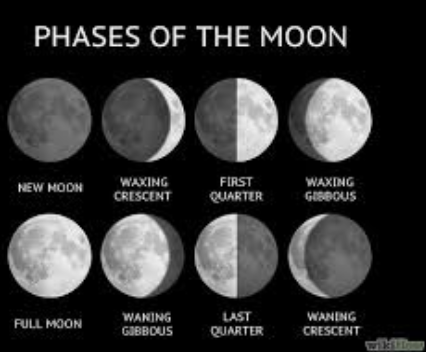

Kia ora 8F2 students. Welcome back to Term 3. Below you will find the Achievement Objectives and the Learning Intention for this term.
Achievement Objectives
Planet Earth and Beyond Level 3/4
Earth systems
Develop an understanding that water, air, rocks and soil, and life forms make up our planet and recognise that these are also Earth’s resources.
Astronomical systems
Investigate the components of the solar system, developing an appreciation of the distances between them.
EXPLORE / TŪHURA learning intentions:
- We are EXPLORING to investigate the formation of day and night and the seasons
- We are EXPLORING to recognise how the phases of the moon are formed
-
We are EXPLORING to investigate the stars and their constellations
SUCCESS CRITERIA
- Understand that the Earth rotates, or spins, on its axis in a cyclical fashion.
- Investigate the rotation of the Earth and that it causes day and night.
- Understand that the tilt of the earth causes the seasons.
- Able to name the phases of the moon, match to the shape.
- Describe the formation of a star and their constellation
ACTIVITIES
See Google Classroom for all activities
Period 1Introduction to our new context “Around the world in 80 days”
Science fair grades and boards
Period 2
Look at the journey the travellers took and what continents they travelled
Period 3
Build your own air balloon
Homework
-





Kia ora 8F1 students. Welcome back to Term 3. Below you will find the Achievement Objectives and the Learning Intention for this term.
Achievement Objectives
Planet Earth and Beyond Level 3/4
Earth systems
Develop an understanding that water, air, rocks and soil, and life forms make up our planet and recognise that these are also Earth’s resources.
Astronomical systems
Investigate the components of the solar system, developing an appreciation of the distances between them.
EXPLORE / TŪHURA learning intentions:
- We are EXPLORING to discover how to navigate the world through science.
- We are EXPLORING to investigate the structure of the earth.
- We are EXPLORING t
o investigate volcanoes and their effects.
-
We are EXPLORING to locate the tectonic plates and their movements.
SUCCESS CRITERIA
- Describe the basic structure of the earth
- Understand how some of the earth's systems interact
- Identify and name features of the tectonic plates
- Describe the formation of a star and their constellation
- Know the different types of volcano
- Understand how they are different
ACTIVITIES
See Google Classroom for all activities
Lesson 1
Look at the journey the travellers took and what continents they have travelled.
Activity on Google Classroom
Lesson 2
How is Astronomy used for navigation and exploring?
Lesson 3
Layers of the Earth PPP
Youtube video
Activity on Google Classroom
Homework
Work not completed in class
-

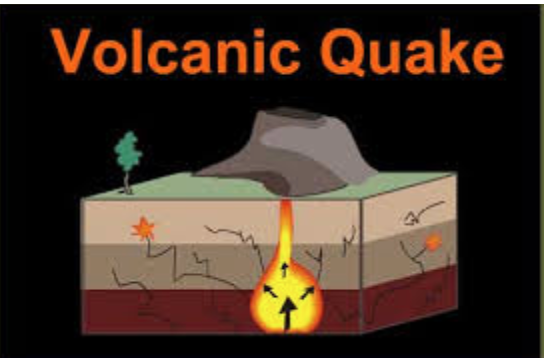

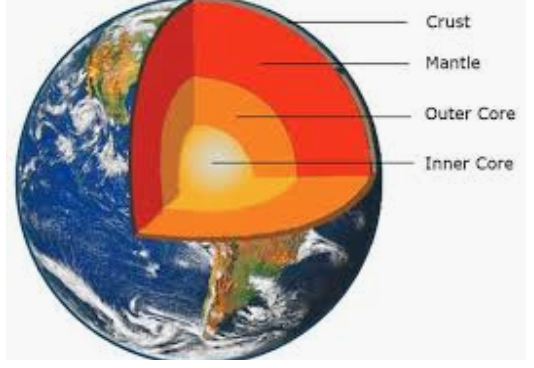

Kia ora 8F1 students. Welcome back to Term 3. Below you will find the Achievement Objectives and the Learning Intention for this term.
Achievement Objectives
Planet Earth and Beyond Level 3/4
Earth systems
Develop an understanding that water, air, rocks and soil, and life forms make up our planet and recognise that these are also Earth’s resources.
Astronomical systems
Investigate the components of the solar system, developing an appreciation of the distances between them.
EXPLORE / TŪHURA learning intentions:
- We are EXPLORING to discover how to navigate the world through science.
- We are EXPLORING to investigate the structure of the earth.
- We are EXPLORING to investigate
volcanoes and their effects.
-
We are EXPLORING to locate the tectonic plates and their movements.
SUCCESS CRITERIA
- Describe the basic structure of the earth
- Understand how some of the earth's systems interact
- Identify and name features of the tectonic plates
- Describe the formation of a star and their constellation
- Know the different types of volcano
- Understand how they are different
ACTIVITIES
See Google Classroom for all activities
Lesson 1
Vide of the structure of the Earth
Quiz
Worksheet on Google Classroom
Lesson 2
Identify the tectonic plates
Brain pop
Lesson 3
Modelling the tectonic plates activity
Homework
Work not completed in class
-


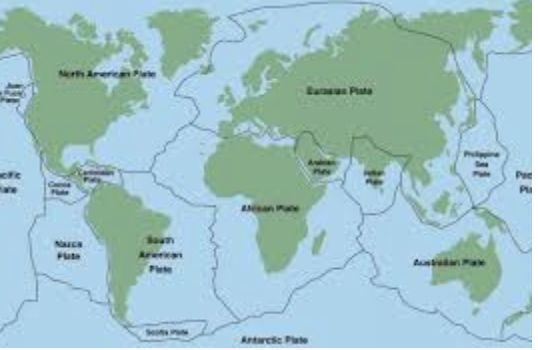


Kia ora 8F2 students. Welcome back to Term 3. Below you will find the Achievement Objectives and the Learning Intention for this term.
Achievement Objectives
Planet Earth and Beyond Level 3/4
Earth systems
Develop an understanding that water, air, rocks and soil, and life forms make up our planet and recognise that these are also Earth’s resources.
Astronomical systems
Investigate the components of the solar system, developing an appreciation of the distances between them.
EXPLORE / TŪHURA learning intentions:
- We are EXPLORING to discover how to navigate the world through science.
- We are EXPLORING to investigate the structure of the earth.
- We are EXPLORING to investigate
volcanoes and their effects.
-
We are EXPLORING to locate the tectonic plates and their movements.
SUCCESS CRITERIA
- Describe the basic structure of the earth
- Understand how some of the earth's systems interact
- Identify and name features of the tectonic plates
- Describe the formation of a star and their constellation
- Know the different types of volcano
ACTIVITIES
See Google Classroom for all activities
Lesson 1
Finish the tectonic plate PPP
Cut out puzzle for plates and name them
Video on tectonic movement
Lesson 2
Solid, liquid and gases Teacher led discussion on the different stages of matter.
Students learn to understand why there is solid and liquid parts within the Earth.
Lesson 3
Class activity
Homework
Work not completed in class
-
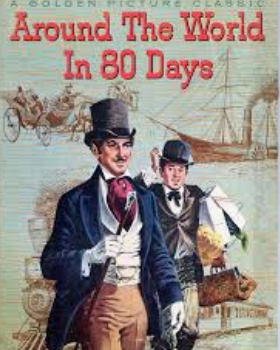




Kia ora 8F2 students. Since we moved to level 3 we are back to distance learning. This week there will be no science lessons as we as we in Forest Whanau are aiming to promote the 'good life': a flourishing society where citizen are happy, healthy, capable and engaged. A society where people have high levels of wellbeing!
Use the time table below to help you understand how to build the 'Five Ways to Wellbeing' into your week.

-





Kia ora 8F2 students. Hope distance learning is going well for you. This week we will be returning to our science lessons. Below I have attached the science work you will be working on this week.
All work is on Google Classroom. If anything is unclear, please do not hesitate and email me.
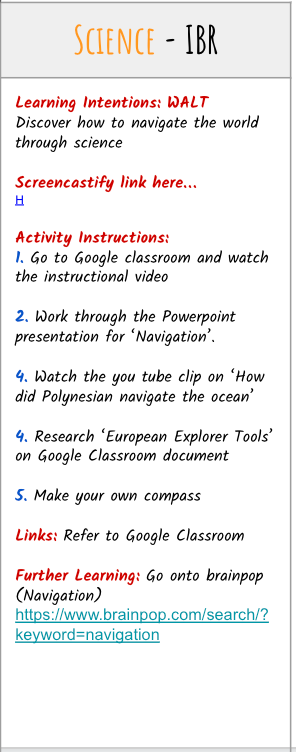
-

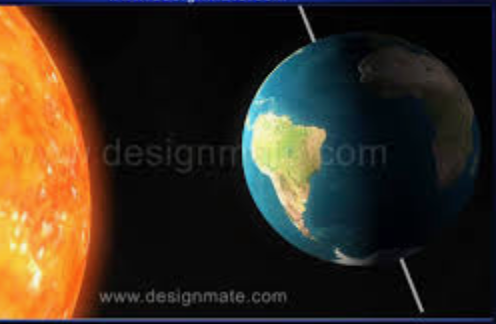
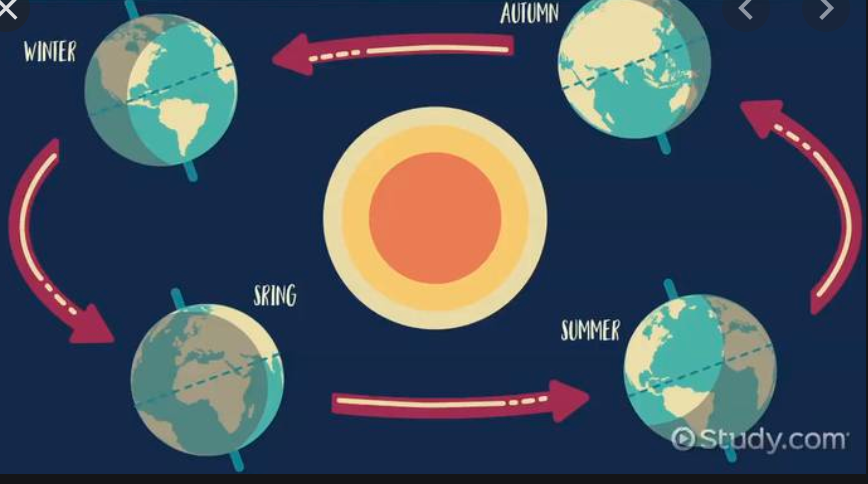
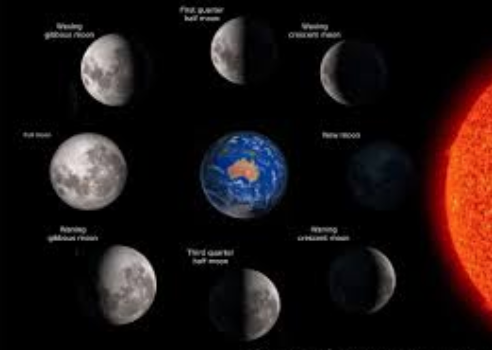
Kia ora 8F2 students. Below you will find the Achievement Objectives and the Learning Intention for this term.
Achievement Objectives
Planet Earth and Beyond Level 3/4
Earth systems
Develop an understanding that water, air, rocks and soil, and life forms make up our planet and recognise that these are also Earth’s resources.
Astronomical systems
Investigate the components of the solar system, developing an appreciation of the distances between them.
FOCUS / ARONGA learning intentions:
- We are FOCUSING on describing the relative position of the Earth, Sun and the Moon.
- We are FOCUSING on developing an understanding of the movements of the Earth, the Sun and the moon
- SUCCESS CRITERIA
- Understand that the Earth rotates, or spins, on its axis in a cyclical fashion
- Know that the rotation of the Earth causes day and night.
- Understand that the tilt of the earth causes the seasons
- Identify the poles having very long days and nights
- Describe the difference between Northern and Southern Hemisphere in seasons
- Name the phases of the moon, match to the shape
- Describe the relative position of earth, sun and moon
ACTIVITIES
See Google Classroom for all activities
Lesson 1
Discuss last weeks online work in class - Navigation tools. Finish off last weeks work
Lesson 2
Day and night Powerpoint presentation
Group discussion and brainstorm
Worksheet
Cloze activity
Lesson 3
Education perfect
Explore the time difference in parts of the world
Homework
Work not completed in class
-




Kia ora 8F2 students. Below you will find the Achievement Objectives and the Learning Intention for this term.
Achievement Objectives
Planet Earth and Beyond Level 3/4
Earth systems
Develop an understanding that water, air, rocks and soil, and life forms make up our planet and recognise that these are also Earth’s resources.
Astronomical systems
Investigate the components of the solar system, developing an appreciation of the distances between them.
FOCUS / ARONGA learning intentions:
- We are FOCUSING on describing the relative position of the Earth, Sun and the Moon.
- We are FOCUSING on developing an understanding of the movements of the Earth, the Sun and the moon
- SUCCESS CRITERIA
- Understand that the Earth rotates, or spins, on its axis in a cyclical fashion
- Know that the rotation of the Earth causes day and night.
- Understand that the tilt of the earth causes the seasons
- Identify the poles having very long days and nights
- Describe the difference between Northern and Southern Hemisphere in seasons
- Name the phases of the moon, match to the shape
- Describe the relative position of earth, sun and moon
ACTIVITIES
See Google Classroom for all activities
Lesson 1
Day and night Powerpoint presentation
Group discussion and brainstorm
Worksheet Day and Night
- Lesson 2
Group Navigate the NASA website
Earth rotation Day and Night Interactive website
Lesson 3
Make a sundial
Homework
Work not completed in class
-




Kia ora 8F2 students. Below you will find the Achievement Objectives and the Learning Intention for this term.
Achievement Objectives
Planet Earth and Beyond Level 3/4
Earth systems
Develop an understanding that water, air, rocks and soil, and life forms make up our planet and recognise that these are also Earth’s resources.
Astronomical systems
Investigate the components of the solar system, developing an appreciation of the distances between them.
FOCUS / ARONGA learning intentions:
- We are FOCUSING on describing the relative position of the Earth, Sun and the Moon.
- We are FOCUSING on developing an understanding of the movements of the Earth, the Sun and the moon
- SUCCESS CRITERIA
- Understand that the Earth rotates, or spins, on its axis in a cyclical fashion
- Know that the rotation of the Earth causes day and night.
- Understand that the tilt of the earth causes the seasons
- Identify the poles having very long days and nights
- Describe the difference between Northern and Southern Hemisphere in seasons
- Name the phases of the moon, match to the shape
- Describe the relative position of earth, sun and moon
ACTIVITIES
See Google Classroom for all activities
Lesson 1
Understanding the seasons PPP
Group work
Lesson 2
Experiment in the lab
Lesson 3
Teacher only day
Homework
Work not completed in class -




Kia ora 8F2 students. Below you will find the Achievement Objectives and the Learning Intention for this term.
Achievement Objectives
Planet Earth and Beyond Level 3/4
Earth systems
Develop an understanding that water, air, rocks and soil, and life forms make up our planet and recognise that these are also Earth’s resources.
Astronomical systems
Investigate the components of the solar system, developing an appreciation of the distances between them.
FOCUS / ARONGA learning intentions:
- We are FOCUSING on describing the relative position of the Earth, Sun and the Moon.
- We are FOCUSING on developing an understanding of the movements of the Earth, the Sun and the moon
- SUCCESS CRITERIA
- Understand that the Earth rotates, or spins, on its axis in a cyclical fashion
- Know that the rotation of the Earth causes day and night.
- Understand that the tilt of the earth causes the seasons
- Identify the poles having very long days and nights
- Describe the difference between Northern and Southern Hemisphere in seasons
- Name the phases of the moon, match to the shape
- Describe the relative position of earth, sun and moon
ACTIVITIES
See Google Classroom for all activities
Lesson 1Powerpoint presentation “Phases of the moon”
You tube clip “Moon Phases”
Moon diary worksheet
Lesson 2
Education Perfect
Quizlet - Phases of the moon
Lesson 3
Documentary “Formation of the Earth and solar system”
Homework
-
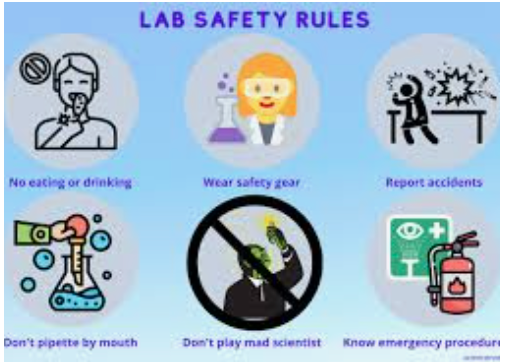


Kia ora 8F2 students. Welcome back to Term 4. Below you will find the Achievement Objectives and the Learning Intention for this term.
Achievement Objectives
Material world Level 3/4
Properties and changes of matter
- Group materials in different ways, based on the observations and measurements of the characteristic chemical and physical properties of a range of different materials.
EXPLORE / TŪHURA learning intentions:
- We are EXPLORING to understand lab rules and warnings so they can conduct themselves in a safe manner
- We are EXPLORING to recognise and recall a range of laboratory equipment
- We are EXPLORING to investigate the concepts of recycling and up-cycling
- We are EXPLORING to define the term sustainability
We are EXPLORING to learn what improves and harms their local, natural and built environments and about some of the ways people look after
SUCCESS CRITERIA- Describe the different hazards in a laboratory
- Identify and describe the different range of laboratory equipment
- Describe the difference between recycling and up-cycling
- Understand the concept of sustainability and describe its meaning
- Describe why it is important to look after the environment
ACTIVITIES
See Google Classroom for all activities
Lesson 1PPP presentation on lab safety
Worksheet
Lesson 2
Worksheet on Lab safetyBrain pop
Lesson 3
Getting familiar with the equipment in the lab
Homework
Work not completed in class -


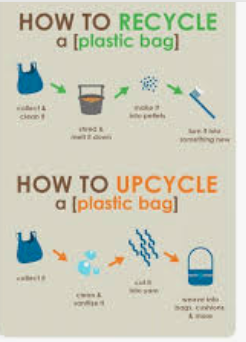
Kia ora 8F2 students. Welcome back to Term 4. Below you will find the Achievement Objectives and the Learning Intention for this term.
Achievement Objectives
Material world Level 3/4
Properties and changes of matter
- Group materials in different ways, based on the observations and measurements of the characteristic chemical and physical properties of a range of different materials.
EXPLORE / TŪHURA learning intentions:
- We are EXPLORING to investigate the concepts of recycling and
up-cycling
- We are EXPLORING to define the term sustainability
-
We are EXPLORING to learn what improves and harms their local, natural and built environments and about some of the ways people look after
SUCCESS CRITERIA- Describe the difference between recycling and up-cycling
- Understand the concept of sustainability and describe its meaning
- Describe the difference between renewable and non-renewable resources
ACTIVITIES
See Google Classroom for all activities
Lesson 1PPP on Sustainability
Brain pop
Worksheet - Renewable and non-renewable energy
Lesson 2Discuss different people's account of 'How sustainable are you?'
Activity - Discuss different people's sustainable or not sustainable life.
Lesson 3
'The plastic problem' - discuss the use of plastic
Homework
Work not completed in class -
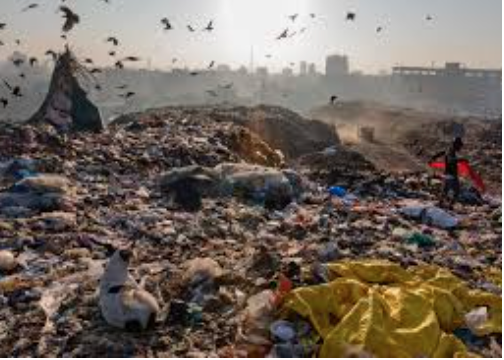
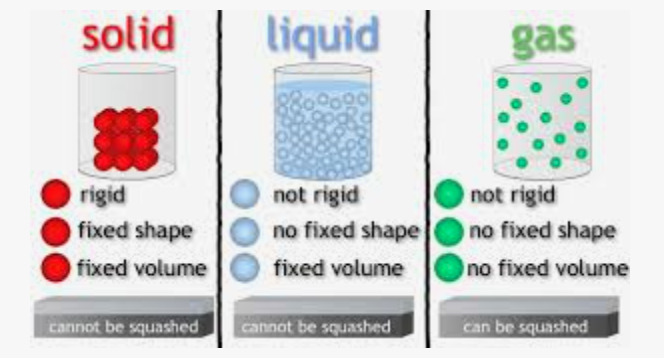
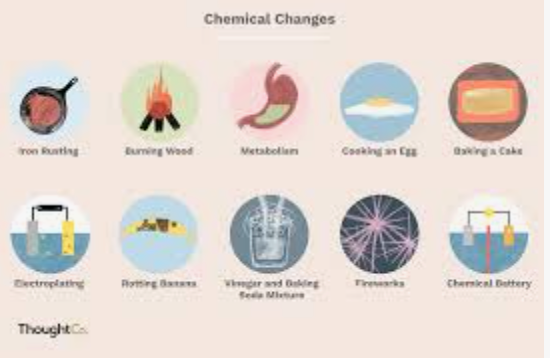
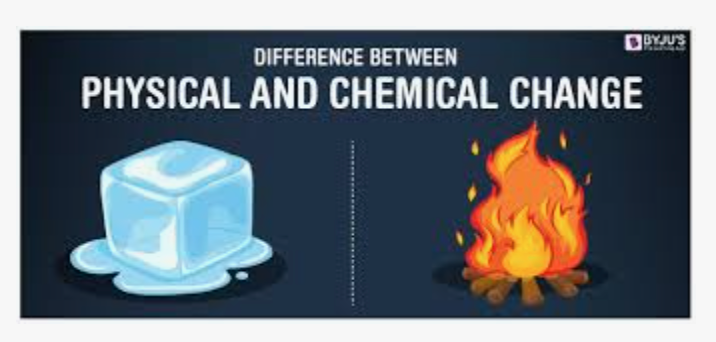
Kia ora 8F2 students. Welcome back to Term 4. Below you will find the Achievement Objectives and the Learning Intention for this term.
Achievement Objectives
Material world Level 3/4
Properties and changes of matter
- Group materials in different ways, based on the observations and measurements of the characteristic chemical and physical properties of a range of different materials.
FOCUS / ARONGA learning intentions:
- We are FOCUSING on developing an understanding of the effects of plastic and the environment.
- We are FOCUSING on identifying the different states of solid, liquid and gases.
- We are FOCUSING on understanding the difference of physical and chemical changes.
SUCCESS CRITERIA
- Describe the effect of plastic on the environment
- Understand the difference between solid, liquid and gases.
- Describe the difference between a physical and chemical change
ACTIVITIES
See Google Classroom for all activities
Lesson 1Teacher only day
Lesson 2
PPP on 'The plastic problem'
Teacher led activity - Draw a spider diagram with all the plastics you have used
Lesson 3
Activity - find as many things you can what are made out of plastic around the school.Check the label if it is recyclable or not.
Homework
Work not completed in class
-

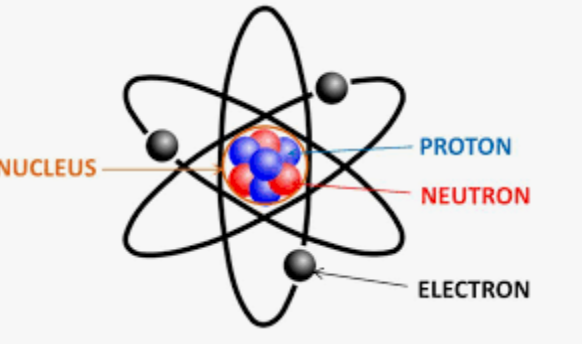


Kia ora 8F2 students. Welcome back to Term 4. Below you will find the Achievement Objectives and the Learning Intention for this term.
Achievement Objectives
Material world Level 3/4
Properties and changes of matter
- Group materials in different ways, based on the observations and measurements of the characteristic chemical and physical properties of a range of different materials.
FOCUS / ARONGA learning intentions:
- We are FOCUSING on developing an understanding of the effects of plastic and the environment.
- We are FOCUSING on identifying the structure of an atom
- We are FOCUSING on understanding the difference of physical and chemical changes.
SUCCESS CRITERIA
- Describe the effect of plastic on the environment
- Describe the make up of an atom
- Be able to name the atomic number and the mass number of an atom
- Describe the difference between a physical and chemical change
ACTIVITIES
See Google Classroom for all activities
Lesson 1Revise the structure of an atom with the "Build your own atom' game.
Lesson 2
Understand the atomic number and the mass number.
Find elements on the periodic table.
Lesson 3
Bike training
Homework
Work not completed in class -




Kia ora 8F2 students. Welcome back to Term 4. Below you will find the Achievement Objectives and the Learning Intention for this term.
Achievement Objectives
Material world Level 3/4
Properties and changes of matter
- Group materials in different ways, based on the observations and measurements of the characteristic chemical and physical properties of a range of different materials.
FOCUS / ARONGA learning intentions:
- We are FOCUSING on developing an understanding of the effects of plastic and the environment.
- We are FOCUSING on identifying the structure of an atom
- We are FOCUSING on understanding the difference of physical and chemical changes.
SUCCESS CRITERIA
- Describe the effect of plastic on the environment
- Describe the make up of an atom
- Be able to name the atomic number and the mass number of an atom
- Describe the difference between a physical and chemical change
ACTIVITIES
See Google Classroom for all activities
Lesson 1Navigate the periodic table
You tube clip
Colour in non-metals, semi-metals and metals
Lesson 2
Worksheet on google classroom and finish colouring in the Periodic table.
Lesson 3
Find 4 common elements and their uses. Find their Atomic mass number and Atomic number
Homework
Work not completed in class -




Kia ora 8F2 students. Welcome back to Term 4. Below you will find the Achievement Objectives and the Learning Intention for this term.
Achievement Objectives
Material world Level 3/4
Properties and changes of matter
- Group materials in different ways, based on the observations and measurements of the characteristic chemical and physical properties of a range of different materials.
FOCUS / ARONGA learning intentions:
- We are FOCUSING on developing an understanding of the effects of plastic and the environment.
- We are FOCUSING on identifying the structure of an atom
- We are FOCUSING on understanding the difference of physical and chemical changes.
SUCCESS CRITERIA
- Describe the effect of plastic on the environment
- Describe the make up of an atom
- Be able to name the atomic number and the mass number of an atom
- Identify the difference between element, compound and mixture
- Describe the difference between a physical and chemical change
ACTIVITIES
See Google Classroom for all activities
Lesson 1Finish writing up your science blurb for your up-cycle product.
Lesson 2
PPP on element, compounds and mixtures
Lesson 3
Practical seperate a mixture
Homework
Work not completed in class -




Kia ora 8F2 students. Welcome back to Term 4. Below you will find the Achievement Objectives and the Learning Intention for this term.
Achievement Objectives
Material world Level 3/4
Properties and changes of matter
- Group materials in different ways, based on the observations and measurements of the characteristic chemical and physical properties of a range of different materials.
FOCUS / ARONGA learning intentions:
- We are FOCUSING on developing an understanding of the effects of plastic and the environment.
- We are FOCUSING on identifying the structure of an atom
- We are FOCUSING on understanding the difference of physical and chemical changes.
SUCCESS CRITERIA
- Describe the effect of plastic on the environment
- Describe the make up of an atom
- Be able to name the atomic number and the mass number of an atom
- Identify the difference between element, compound and mixture
- Describe the difference between a physical and chemical change
ACTIVITIES
See Google Classroom for all activities
Lesson 1Champion assembly
Lesson 2
Santa show
Lesson 3
Forest fun day out
Homework
Work not completed in class






